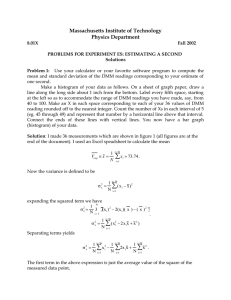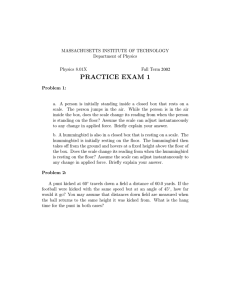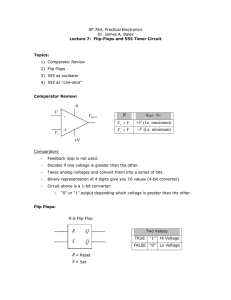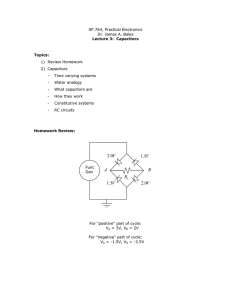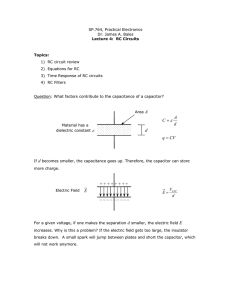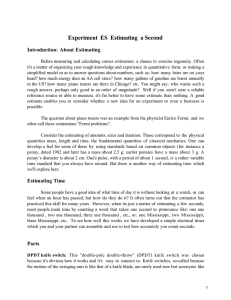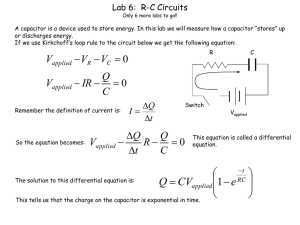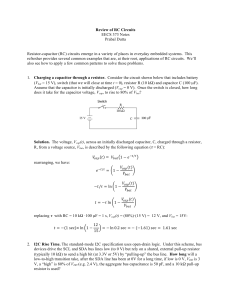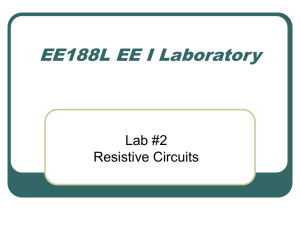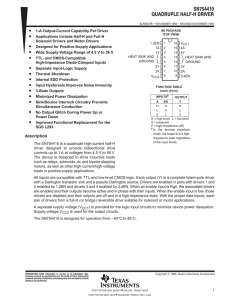Massachusetts Institute of Technology Physics Department
advertisement
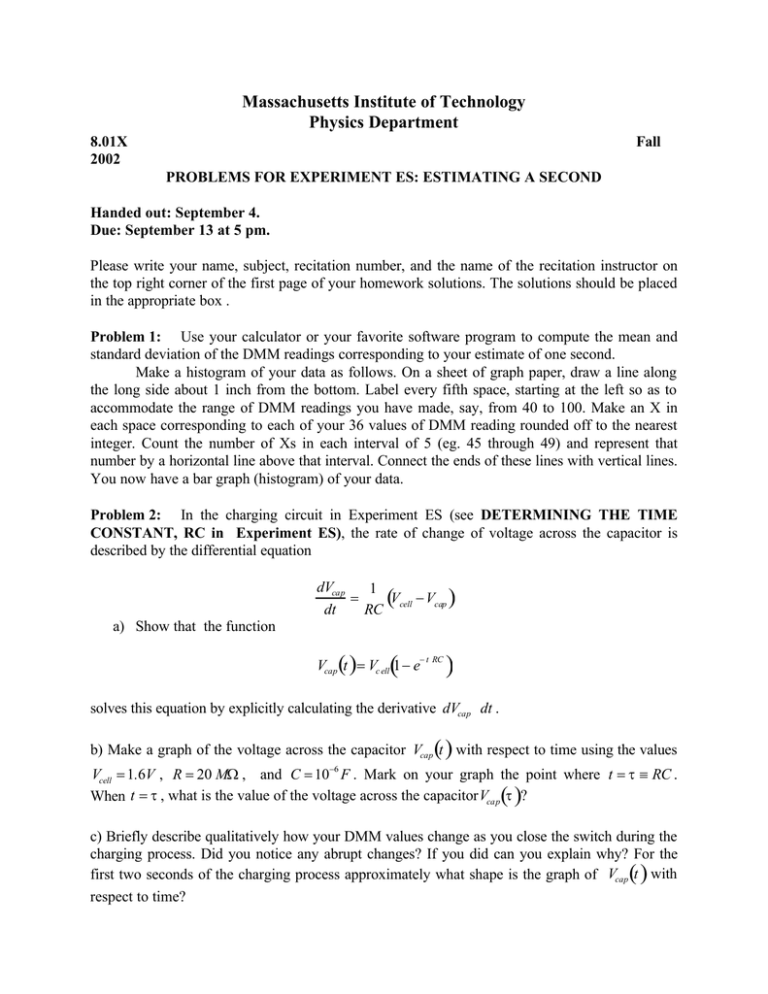
Massachusetts Institute of Technology Physics Department 8.01X 2002 Fall PROBLEMS FOR EXPERIMENT ES: ESTIMATING A SECOND Handed out: September 4. Due: September 13 at 5 pm. Please write your name, subject, recitation number, and the name of the recitation instructor on the top right corner of the first page of your homework solutions. The solutions should be placed in the appropriate box . Problem 1: Use your calculator or your favorite software program to compute the mean and standard deviation of the DMM readings corresponding to your estimate of one second. Make a histogram of your data as follows. On a sheet of graph paper, draw a line along the long side about 1 inch from the bottom. Label every fifth space, starting at the left so as to accommodate the range of DMM readings you have made, say, from 40 to 100. Make an X in each space corresponding to each of your 36 values of DMM reading rounded off to the nearest integer. Count the number of Xs in each interval of 5 (eg. 45 through 49) and represent that number by a horizontal line above that interval. Connect the ends of these lines with vertical lines. You now have a bar graph (histogram) of your data. Problem 2: In the charging circuit in Experiment ES (see DETERMINING THE TIME CONSTANT, RC in Experiment ES), the rate of change of voltage across the capacitor is described by the differential equation dVcap dt = 1 (Vcell - Vcap ) RC a) Show that the function ( Vcap (t )= Vc ell 1- e - t RC ) solves this equation by explicitly calculating the derivative dVcap dt . b) Make a graph of the voltage across the capacitor Vcap (t ) with respect to time using the values Vcell = 1.6V , R = 20 MW , and C = 10-6 F . Mark on your graph the point where t = t ” RC . When t = t , what is the value of the voltage across the capacitor Vcap(t )? c) Briefly describe qualitatively how your DMM values change as you close the switch during the charging process. Did you notice any abrupt changes? If you did can you explain why? For the first two seconds of the charging process approximately what shape is the graph of Vcap (t ) with respect to time?
